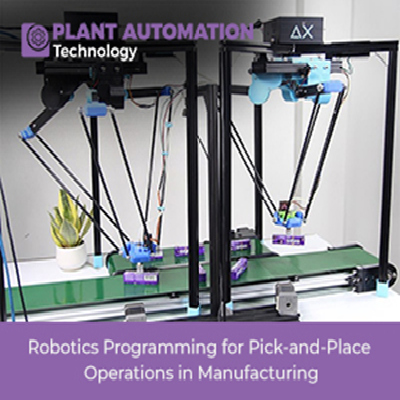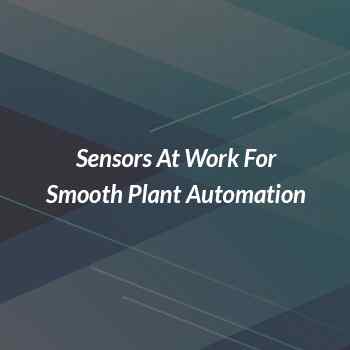Robotics Programming for Pick-and-Place Operations in Manufacturing

Introduction to Pick-and-Place Operations in Manufacturing
Pick-and-place operations are fundamental processes in modern manufacturing industries. They involve automated picking of objects from one location and precise placement in another. These tasks are often repetitive, time-consuming, and require high precision, making them ideal candidates for robotic automation.
In today's competitive manufacturing landscape, companies are increasingly turning to robotics to improve efficiency, reduce labor costs, and ensure consistent product quality. Robotics programming plays a pivotal role in enabling robots to perform pick-and-place operations quickly and accurately.
Types of Robots Used in Pick-and-Place Operations
There are several types of robots commonly used in pick-and-place operations, each with its own strengths and applications:
- Industrial Robotic Arms: These are versatile robots with multiple degrees of freedom, allowing them to move in various directions. They are well-suited for a wide range of pick-and-place tasks in manufacturing.
- Delta Robots: Delta robots are renowned for their exceptional speed capabilities, making them ideal choices for applications that demand swift pick-and-place cycles. Industries commonly utilize Delta robots in packaging and food processing tasks.
- SCARA Robots: SCARA robots, standing for Selective Compliance Assembly Robot Arm, are perfectly suited for assembly and pick-and-place applications that require impeccable precision in horizontal movements. Their specialized design and kinematics enable them to excel in tasks demanding accurate and repeatable performance.
- Cartesian Robots: Cartesian robots, also referred to as gantry robots, operate by moving along three linear axes. These versatile robots find frequent use in large-scale pick-and-place operations, particularly in tasks such as efficiently loading and unloading materials from conveyors. Their ability to navigate across multiple dimensions makes them indispensable for handling substantial payloads with precision and speed.
Robotics and Programming Basics
- Robotics programming involves writing code that instructs robots on how to perform specific tasks. Manufacturing applications use several programming languages, including:
- Robot Programming Languages: Many industrial robots come with proprietary programming languages. These languages are typically user-friendly, allowing engineers and technicians to program robots efficiently.
- G-code and M-code: In CNC-based pick-and-place systems, G-code and M-code are commonly used to control robot and machine movements, ensuring precise pick-and-place operations.
Motion planning and control are essential aspects of robotics programming. Engineers need to specify robot movements, velocities, and accelerations to ensure smooth and precise pick-and-place actions.
Designing an Efficient Pick-and-Place System
When implementing a pick-and-place system in manufacturing, several factors should be considered to ensure efficiency:
- Identifying Manufacturing Needs: It's crucial to analyze the specific pick-and-place requirements of the manufacturing process. Factors such as cycle time, payload capacity, and workspace constraints must be taken into account.
- Integrating Robots with Existing Infrastructure: Integrating robots seamlessly into the existing manufacturing environment is essential for smooth operations. Proper communication between the robots and other machines, such as conveyors and sensors, is critical.
- Safety Considerations: Safety is paramount in any automated system. Engineers must design pick-and-place systems with appropriate safety features to protect human workers who may collaborate with the robots.
Vision Systems and Object Recognition
Vision systems play a crucial role in pick-and-place applications. By using cameras and image processing algorithms, robots can identify and locate objects with precision. Key aspects of vision systems in pick-and-place operations include:
- Role of Vision Systems: Vision systems provide robots with the ability to "see" the objects they are picking and placing. They capture real-time data about the environment, enabling robots to adapt to variations in object positions and orientations.
- Implementing Object Recognition Algorithms: Integrating object recognition algorithms involves employing sophisticated image processing techniques, including pattern matching and color segmentation. These advanced algorithms play a vital role in precisely identifying objects and accurately determining their positions.
- Ensuring Accurate and Reliable Object Detection: Calibration, lighting conditions, and camera placement are critical factors in ensuring accurate and reliable object detection, especially in dynamic manufacturing environments.
Path Planning and Trajectory Generation
Path planning and trajectory generation are essential for optimizing robot movements during pick-and-place operations.
- Methods for Path Planning: Path planning algorithms determine the optimal path the robot should follow to pick up an object and place it accurately at the target location. Different algorithms, such as A* (A-star) and D* (D-star), are commonly used in robotics.
- Optimizing Robot Movements: Efficient path planning leads to reduced cycle times and increased productivity. Engineers must balance speed and precision while avoiding obstacles and collisions.
- Collision Avoidance Techniques: To prevent collisions with other robots, machinery, or humans, collision avoidance techniques are integrated into robotics programming. These techniques use sensors to detect potential collisions and modify the robot's trajectory.
Programming for Pick-and-Place Applications
Developing robotics programming for pick-and-place operations involves several key considerations:
- Code Structure: The robotics code for pick-and-place applications typically follows a structured format, including initialization, motion planning, and error handling sections.
- Handling Sensor Feedback: Robots equipped with sensors can receive real-time feedback about the environment. The programming should include routines for processing this data to make informed decisions during pick-and-place tasks.
- Real-Time Adjustments: Pick-and-place systems may need to adapt to changes in the manufacturing environment, such as variations in object positions or conveyor speeds. Real-time adjustments in the programming are essential to maintain efficiency.
- Error Handling and Recovery Strategies: Robotics programming should include error-handling mechanisms to handle unexpected situations, such as object slippage or misalignment during pick-and-place tasks.
Benefits of Robotic Programming in Pick-and-Place
Robotic programming in pick-and-place operations offers several significant benefits for manufacturing industries:
- Increased Efficiency and Productivity: Robots can perform pick-and-place tasks faster than human workers, leading to increased production throughput and reduced cycle times.
- Reduced Labor Costs and Human Errors: By automating repetitive tasks, companies can minimize labor costs and eliminate human errors in pick-and-place operations.
- Consistent and Repeatable Performance: Robots programmed for pick-and-place operations deliver consistent and repeatable results, ensuring high product quality.
Case Studies: Successful Implementations
Several industries have successfully implemented robotics programming in pick-and-place applications. Some real-world examples include:
- Electronics Manufacturing: Robotics programming has revolutionized electronics assembly lines, enabling the precise placement of tiny components on circuit boards at high speeds.
- Automotive Industry: In automotive manufacturing, robots programmed for pick-and-place tasks handle heavy parts and components with accuracy, enhancing production efficiency.
- Food and Beverage Packaging: Pick-and-place robots have been instrumental in automating the packaging of food and beverage products, reducing manual labor, and ensuring hygienic handling.
Future Trends in Robotics Programming for Pick-and-Place
The future of robotics programming for pick-and-place operations holds several exciting possibilities:
- Advancements in Robotic Technologies: Ongoing developments in robotics, such as improved actuators and sensors, will lead to more sophisticated pick-and-place systems with enhanced capabilities.
- Integration of AI and Machine Learning: The integration of AI and machine learning introduces significant advancements in pick-and-place operations. By incorporating these intelligent algorithms, object recognition capabilities are greatly improved, and pick-and-place trajectories can be dynamically optimized using real-time data, leading to enhanced efficiency and precision in manufacturing processes.
- Potential Challenges and Opportunities: As pick-and-place operations evolve and grow more complex, engineers will encounter both challenges and opportunities. Dealing with irregularly shaped objects and seamlessly integrating robots into flexible manufacturing systems will be among the key challenges. However, these hurdles also present opportunities for innovation and advancements in robotics programming, ultimately leading to more efficient and versatile manufacturing processes.
Conclusion
Robotics programming for pick-and-place operations in manufacturing is driving a transformative shift in the industry. By leveraging the power of automation and precise programming, manufacturers can achieve higher levels of efficiency, cost-effectiveness, and product quality. As robotics technology continues to evolve, we can expect even more advancements and innovative solutions in pick-and-place applications, further propelling the manufacturing sector into a new era of productivity and competitiveness.







